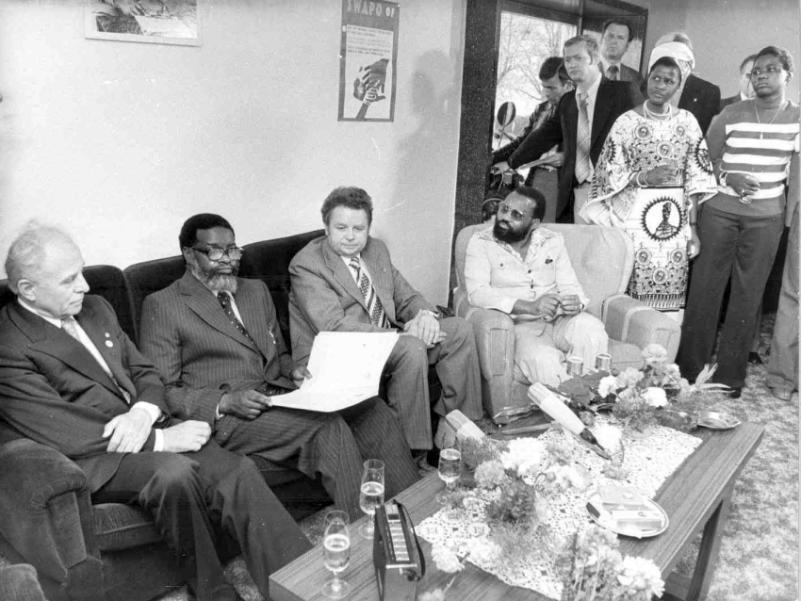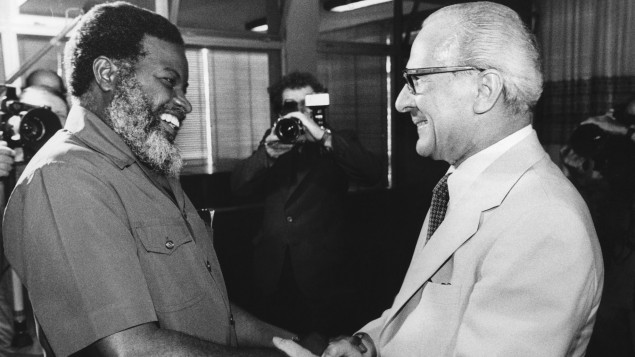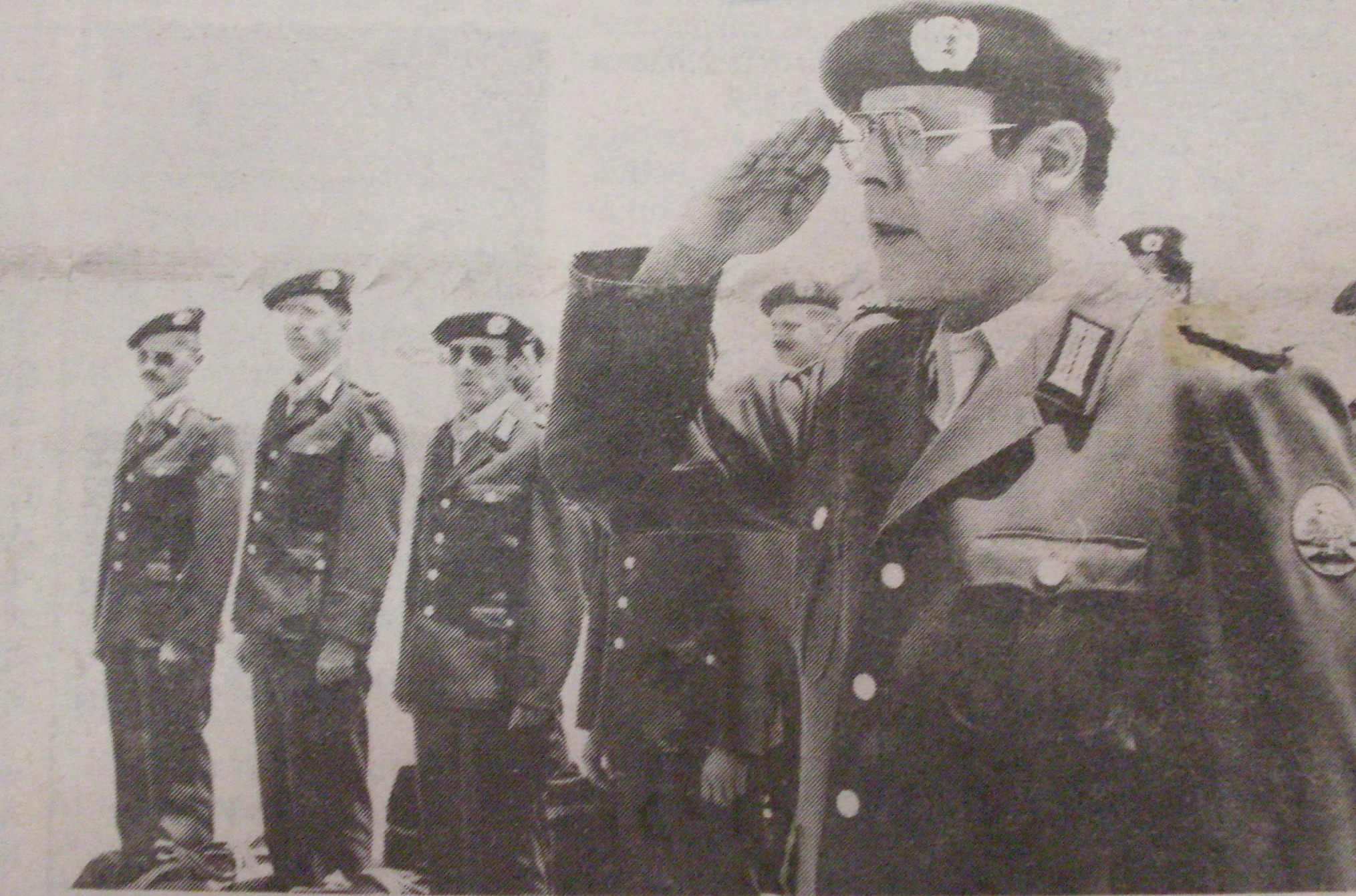By: Daniel Lange (University of Potsdam)
Original Published 8 July 2016 [LINK TO ORIGINAL]
As the Winds of Change were finally blowing through Namibia in 1989-1990, the United Nations Transition Assistance Group (UNTAG) was given the difficult task to organise free and fair elections. These elections would result in a constituent assembly, and independence shortly thereafter. This was one of the largest UN peace projects ever conducted; UNTAG had over 8000 military officers, many election observers, and their own civil police unit.
Often forgotten within this history, however, is a special moment in German-Namibian relations. The UNTAG mission to Namibia was not only the first UN peace project supported by West Germany; it was also the first and only time East Germany, the former German Democratic Republic (GDR), was involved. In October 1989, the same month when the revolutions in the GDR hit their peak, resulting in the collapse of General Secretary Erich Honecker and the Socialist Unity Party (SUP), 30 East German police observers put their boots on Namibian ground. They would later be stationed in Ombalantu, Oshakati, Bethanie, Mariental, Gibeon, and Ongandjera until Namibia’s independence in March 1990.
Looking back from today, this seems surreal and strange that the GDR was active in Namibia’s peace process after socialist rule broke down in East Germany in autumn 1989, months earlier. To understand the roots of this special chapter in German-Namibian relations, we must look back to 1962.

Alliance Building
In January 1962, Sam Nujoma (who was SWAPO’s president at the time) visited the GDR, beginning the tight connections which SWAPO would maintain with the Socialist Unity Party (SUP) until independence. During the Cold War, in which Germany was divided into two republics, East Berlin had several reasons for this alliance. The West German Hallstein-Doktrin put pressure on many Third World states and forbade them to enter into formal diplomatic relations with the GDR. However, the SUP was looking for global diplomatic acceptance and new bilateral partners. Therefore, from 1960, the SUP developed its own East German strategy for their foreign affairs in Africa, where more and more countries were obtaining independence.
The GDR focused particularly on national liberation movements with socialist or communist character, and tried to win them as political and ideological “comrades”. It was in Southern Africa, where these movements were fighting against apartheid and colonialism (particularly in Namibia, South Africa, Zimbabwe, Angola, and Mozambique) where these efforts grew in intensity from the 1970s.

In the meantime, the East Germans had reached international and diplomatic recognition on the global stage by 1972/3, resulting in UN membership and formal contacts between the SUP and SWAPO in 1977. By 1978, SWAPO had officially established a diplomatic mission in East Berlin. In 1979, during his first official diplomatic tour of Africa, the SUP’s General Secretary Erich Honecker met Sam Nujoma in Luanda. And after the 1978 Cassinga attacks, they began to take care of and educate over 400 SWAPO ‘GDR Kids’ in East German kindergartens and schools.
Resolution 435 and Peace Building
In September 1978, the United Nations Security Council decided to pass resolution 435, which laid the framework for Namibia’s independence under a peace process supervised by UNTAG. The GDR’s Ministry of Foreign Affairs hoped to be involved in that process and envisioned the implementation of SCR 435 already in 1979, even before the elections in Zimbabwe (another African nation which the East Germans sought relations with).
UNTAG and the Namibian situation was supposed to be a Southern African pilot programme in the GDR’s efforts to take on a more active role in the United Nations. However, when SCR 435 was finally implemented in April 1989, after a long international diplomatic process, times had already changed. Cold War tensions and confrontations between East and West weren’t as rough anymore, and while the Namibia question was still significant, it was no longer top priority in East German foreign policy.

Despite this, East Germany’s goals in Namibia and in the UN were still alive, as was their good partnership with SWAPO. After all, the GDR did support SWAPO’s liberation struggle, providing military and medical aid, SWAPO was one of the major recipients of financial support under the GDR’s Africa Strategy. Also, the SUP supported the electoral campaign of SWAPO in 1989 with money and promotional film-spots. Also in August 1989, the first Interflug flight from East Germany brought the first 250 GDR kids back to Namibia, many seeing their home country for the first time. The rest returned in July 1990.
Besides this, the GDR was serving its own interests by participating in the implementation on SCR 435: a more active role in the UN, a better strategic position in the region after Namibia’s independence (especially regarding South Africa), as well as maintaining good relations with SWAPO to reach economic goals. In October 1989, a GDR trade delegation, which was the first such mission in Namibia from a socialist state, met with representatives in Windhoek, Tsumeb, Grootfontein and Swakopmund to discuss commercial trade relations in agriculture, fisheries, and industry.
Post-UNTAG, Post-GDR
And what of the 30 East German police observers working under UNTAG? In March 1990, they came home to Germany, but to a very different sort of land. The former head of state Erich Honecker was forced to give up his political office during the revolution, only weeks after he decided to send the police to Namibia. The Berlin Wall had fallen just as Namibia elected its first free parliament (7-11 November 1989).
The reunification of Germany was on the agenda. Three days before Namibia became independent, the people in the former GDR experienced democratic elections for the first time on 18 March 1990. What a big contrast to the Socialist Unity Party’s official position to support free and fair elections on the other end of the world in Namibia! And on 21 March 1990, the GDR’s long alliance with SWAPO was visible for the last time, when the last East German embassy worldwide was opened in Windhoek. The UNTAG endeavours, the first and only time that the GDR was actively involved in an international peace mission, were now over.
